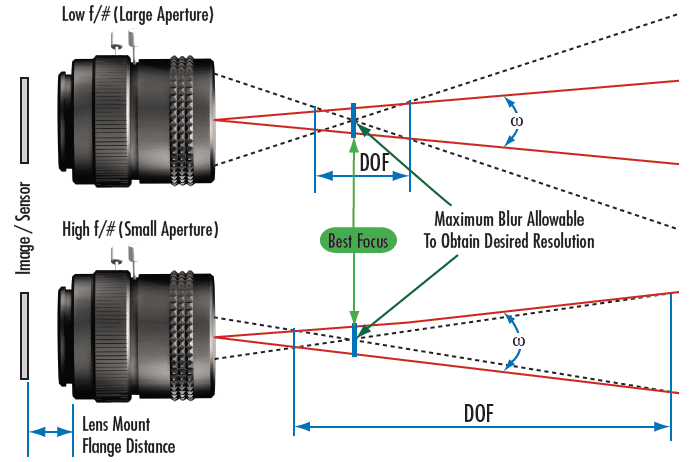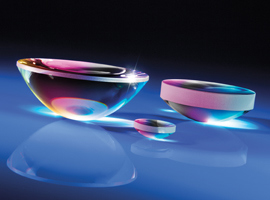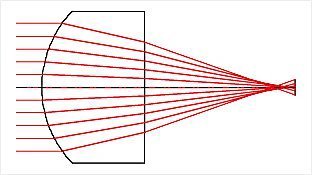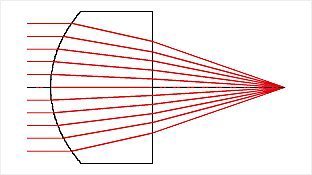

|
|
The video streaming industry is experiencing explosive growth, leading to movies and shows being filmed specifically for online streaming. |
|
|
Videos shot with a shallow depth of field are advantageous for compression and high-quality streaming. |
|
|
Cinema lenses with a shallow depth of field require small f/#s and are difficult to make. |
|
|
Aspheric lenses are indispensable in the design of these fast, high-quality cinema lenses. |
Whether it is the latest show on Netflix®, viral videos on YouTube®, or classics on Disney+®, the world is hungrier than ever for video streaming. This voracious consumption of video content is putting a serious strain on our internet bandwidth and networks are struggling to keep up. Cinematographers are cleverly shooting video with a shallow depth of field to improve the compression and streamed quality of video, but this requires specialized cinema lenses. High-end aspheric lens elements inside of these cinema lenses are indispensable for maintaining quality with a shallow depth of field, ultimately resulting in an optimal Netflix binging experience for people across the globe.
Cinema, or cine, lenses are specially-designed lens assemblies tailored for the demanding video quality requirements of filmmaking. They tend to be much larger and more expensive than the lens assemblies used for machine vision or commercial photography.
The demand for high-quality video has never been higher. The worldwide video streaming market reached USD 42.6 billion in 2019 and is experiencing explosive growth, with an expected compound annual growth rate (CAGR) of 20.4% from 2020 to 2027.2
Cinematographers have been cleverly creating content tailored for streaming by shooting with a shallow depth of field (DOF), which is the distance between the closest and furthest points at which an object will maintain a certain level of resolution without refocusing (Figure 1). A shallow depth of field means that only the shot’s main point of interest will be in focus while the background is blurry. This is often used to draw the viewer’s attention to something in a shot, but it is also advantageous for compressing and streaming video.

Video files are quite large and must be compressed for streaming to reduce file size. Compression algorithms intelligently encode only the information that changes from frame to frame rather than every single pixel in each frame. A shallow DOF is more forgiving to overall compressed image quality because the blurry background typically does not change much from one frame to the next. The compression algorithm can retain more detail in the in-focus region of the video while compressing the blurry background more since compression there will not be as noticeable. As a general rule of thumb, around 10% of bandwidth can be saved by using a low DOF, but this is dependent on the busyness of the background and the exact DOF.1
The cinema lenses used for shallow DOF cinematography must be able to deliver high image quality at a low f/#, or a steep focusing angle. The steeper the angle of light focused by the lens, the more spherical aberration, or variation of the focus distance across the lens’ aperture, there will be. Shallow DOF cinema lenses’ foremost design obstacle is combatting spherical aberration. High-end aspheric lens elements are incorporated into the larger cinema lens assembly to combat this (Figure 2).

Aspheric lenses minimize the impact of aberrations through a more complex surface shape. Manufacturing aspheres is more intricate and difficult than manufacturing spherical lenses, increasing the price of cinema lenses utilizing aspheres for a shallow DOF. It may seem counterintuitive, but more expensive lenses are required to capture video that takes up less data. We can all thank the high-end aspheres inside modern cinema lenses for allowing us to watch entire seasons of our favorite shows on Netflix over a single weekend.

Edmund Optics®’ high volume asphere manufacturing cell operates 24 hours a day to create thousands of precision aspheric lenses per month using state-of-the-art production and metrology equipment. Whether you need in-stock aspheres available immediately or fully-custom aspheres designed by our expert engineers, our skilled optical design and manufacturing engineers will develop a solution tailored to your needs. Contact our engineers today for application guidance or to receive an expedited quote.
 Does Edmund Optics sell cinema lenses?
Does Edmund Optics sell cinema lenses?
 What is the difference between depth of field and depth of focus?
What is the difference between depth of field and depth of focus?
Depth of field describes the difference between the closest and furthest distances at which an object will maintain a certain level of resolution without refocusing, whereas depth of focus describes the different sensor positions through which focus can be maintained with a stationary object. You can learn more in our Depth of Field and Depth of Focus application note.
 How are aspheric lenses made?
How are aspheric lenses made?
Please watch our How an EO Aspheric Lens is Made video to learn about the entire manufacturing process of an asphere from curve generation, in-process metrology, computer numerical controlled (CNC) grinding, CNC polishing, magnetorheological finishing (MRF), centering, coating, to final inspection.
 What are the benefits of aspheric lenses compared to standard singlet lenses?
What are the benefits of aspheric lenses compared to standard singlet lenses?
Aspheric lenses are used to reduce the number of lenses in a design, simplify assembly and minimize stray light, eliminate spherical aberration, and improve resolution and system performance. They correct for spherical and off-axis aberrations. A single aspheric lens offers the same amount of spherical aberration correction that two or more spherical lenses can accomplish. Aspheric lenses, by their very nature, are without the spherical aberration that is inherent in traditional plano-convex and double-convex spherical lenses. In addition to spherical aberration correction, aspheric lenses are very powerful in correcting off-axis/ field dependent aberrations such as field curvature, astigmatism, and distortion. Because of this, complicated ten element designs can be reduced to relatively simple four or five element designs.
There are three varieties of aspheric lenses, each with its own benefit. Precision glass molded aspheric lenses are ideal for volume production requirements because of rapid production of many lenses and low tooling upkeep costs; polished aspheric lenses are ideal for prototype or low volume requirements because of short lead time, minimal special tooling and setup; and aspherized hybrid lenses are ideal for multi-spectral applications because of correction for both spherical and chromatic aberrations.


or view regional numbers
QUOTE TOOL
enter stock numbers to begin
Copyright 2023 | Edmund Optics, Ltd Unit 1, Opus Avenue, Nether Poppleton, York, YO26 6BL, UK
California Consumer Privacy Act (CCPA): Do Not Sell or Share My Personal Information
California Transparency in Supply Chains Act